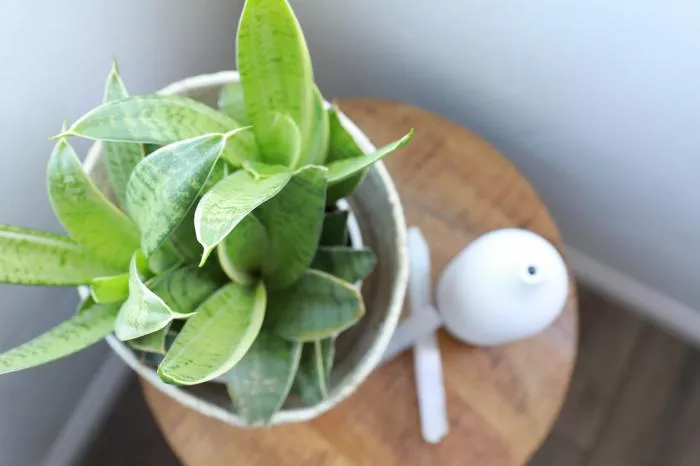The jade snake plant, scientifically known as Sansevieria trifasciata var. laurentii, is a popular choice for indoor gardening. Its striking appearance and minimal care requirements make it a favorite among plant enthusiasts. This article will guide you through the essential aspects of caring for your jade snake plant to ensure it thrives in your home.
Understanding the Jade Snake Plant
The jade snake plant features long, upright leaves that are dark green with vibrant yellow edges. Its architectural form adds a modern touch to any space. This plant is known for its air-purifying qualities, making it a valuable addition to your indoor environment. Understanding its natural habitat will help you replicate the ideal conditions for growth.
Jade snake plants are native to West Africa. They thrive in warm, dry environments with well-draining soil. This knowledge is crucial for creating a suitable environment in your home.
Light Requirements
One of the most critical factors in caring for your jade snake plant is light. These plants are adaptable but prefer bright, indirect sunlight. They can tolerate low light conditions but may grow slower. Direct sunlight can scorch their leaves, leading to brown tips.
To ensure your plant receives adequate light, place it near a window that receives filtered sunlight. If you notice the leaves becoming leggy or stretching towards the light, it may be a sign that your plant needs more brightness.
Watering Your Jade Snake Plant
Watering is another vital aspect of jade snake plant care. These plants are succulents, meaning they store water in their leaves. Overwatering is one of the most common mistakes, leading to root rot.
The general rule is to water your jade snake plant every two to three weeks, depending on the season. In warmer months, you may need to water more frequently, while in cooler months, reduce watering. Always check the soil moisture before watering. Stick your finger into the soil; if the top two inches are dry, it’s time to water.
When you water, do so thoroughly. Allow the excess water to drain out of the pot’s bottom. Ensure the pot has drainage holes to prevent standing water.
Soil Choice
Selecting the right soil is essential for jade snake plant care. These plants thrive in well-draining soil that prevents excess moisture. A cactus or succulent mix is ideal, as it allows for proper drainage while retaining some moisture.
If you prefer to make your own soil mix, combine regular potting soil with sand and perlite in equal parts. This combination will create a lightweight mix that drains well.
Fertilizing Your Jade Snake Plant
Fertilizing your jade snake plant is not mandatory, but it can promote healthy growth. Use a balanced, diluted liquid fertilizer during the growing season, typically from spring to summer. Fertilizing every month is usually sufficient.
Avoid fertilizing in the fall and winter when the plant is dormant. Over-fertilization can lead to salt buildup, damaging the roots.
Temperature and Humidity
Jade snake plants prefer warm temperatures, ideally between 60°F to 80°F (15°C to 27°C). They can tolerate slightly cooler temperatures but should be kept away from drafts and extreme cold.
Regarding humidity, jade snake plants are not fussy. They thrive in low to moderate humidity levels. If your home is very dry, you can occasionally mist the leaves, but this is not necessary for their health.
Pest Management
While jade snake plants are generally resilient, they can be susceptible to pests. Common pests include spider mites, mealybugs, and scale insects. Regularly inspecting your plant for signs of infestations is crucial.
If you notice pests, act quickly. Wipe the leaves with a damp cloth or use a cotton swab dipped in rubbing alcohol to remove them. For severe infestations, consider using an insecticidal soap or neem oil.
Repotting Your Jade Snake Plant
Repotting your jade snake plant is necessary only every couple of years or when it becomes root-bound. Signs that your plant needs repotting include roots growing through the drainage holes or the soil drying out too quickly.
When repotting, choose a pot that is one size larger than the current one. Use fresh soil and gently loosen any tightly bound roots. Water the plant after repotting to help settle the soil.
Common Problems and Solutions
Despite its hardiness, the jade snake plant can encounter issues. Here are some common problems and how to address them:
Yellowing Leaves: This could indicate overwatering. Check the soil moisture and adjust your watering schedule accordingly.
Brown Tips: If the leaf tips are browning, it may be due to underwatering or too much direct sunlight. Ensure you’re providing the right amount of water and light.
Leggy Growth: This is often a sign that your plant is not receiving enough light. Move it to a brighter location.
Propagating Your Jade Snake Plant
Propagation of jade snake plants is a rewarding process. You can propagate through leaf cuttings or by dividing the root clumps.
To propagate from leaf cuttings, follow these steps:
- Use a sharp, clean knife to cut a healthy leaf into sections.
- Allow the cuttings to callous over for a few days.
- Plant the cuttings in well-draining soil, ensuring they are upright.
- Water sparingly until roots develop.
For division, gently remove the plant from its pot and separate the roots into smaller sections. Replant them in their pots, ensuring they are stable.
Conclusion
Caring for your jade snake plant is a straightforward process that can yield beautiful results. By providing the right light, watering, and soil conditions, you can enjoy this striking plant for years to come. Regular maintenance, including checking for pests and repotting when necessary, will ensure its health and vitality.
Incorporating a jade snake plant into your indoor space not only enhances your decor but also contributes to a healthier environment. With minimal care and attention, this resilient plant can thrive in your home, providing beauty and fresh air for your enjoyment.
Related topics:


